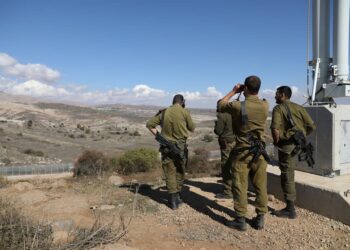Palestine’s struggle for food and water continues after months of destruction ravages Gaza’s farms and orchards
The Gaza Strip, long vulnerable to the vicissitudes of fate, has witnessed its agricultural system pushed to the brink of collapse following Israel’s six-month-long invasion of the Gaza Strip, according to a Post analysis of agricultural data, satellite imagery, and interviews with experts and Palestinians in the Strip.
The Strip’s once-green agricultural lands now lie dry and desolate, with crops abandoned and left to wither, cows left to die, and farms and orchards razed by Israeli airstrikes and bulldozers. The agriculture sector, a key driver of the Strip’s economy, has been severely hampered, with the ability to produce food and clean water severely impacted.
The Post analysis, which combines satellite imagery and agricultural data, reveals how the ongoing military campaign has decimated Gaza’s most fertile lands, which lie in the Strip’s northern region. The area, known locally as Beit Hanoun, was once renowned for its olive trees and date palms, serving as a major source of livelihood for the farmers and communities that rely on it.
However, the area now stands as a testament to the destruction wrought by Israel’s military machine. With the Strip’s agricultural lands lying lifeless and denuded, Palestinians face the prospect of food shortages, clean water shortages, and an ever-greater struggle for survival.
The impact of the conflict on Gazan agriculture has been profound. Already vulnerable before the invasion, the agriculture system now exists on a knife-edge, with the foundations torn asunder and the future uncertain.
A Crucial Cog
As the Post’s analysis highlights, the agriculture sector in Gaza has long been a crucial cog in the economy and has been central to the Strip’s efforts towards self-sufficiency. However, the destruction wrought by Israeli military operations has rendered once-thriving farmlands barren and unproductive. Gaza’s farmers have been left to struggle with the ruins of orchards, livestock, and irrigation systems, and with the prospect of “permanent damage.”
The decimation of farms, crops, and orchards is not merely an economic issue. The Strip’s ability to produce food and clean water has been compromised, putting the health and well-being of its inhabitants at risk. The already fragile infrastructure of Gaza’s agriculture system, comprised of limited water resources and undeveloped farming technologies, is now teetering on the edge of collapse.
The consequences of this strife will be long-lasting and far-reaching, with generations of Palestinians set to suffer the impact of the conflict. The impact this will have on the Strip’s already deeply impoverished populace and the wider Middle Eastern region is likely to be profound.
While the international community is well aware of the devastation wrought by the conflict in Gaza, there is a need to focus attention on the broader ramifications of the decimation of the Gaza’s agricultural system and its impact beyond the physical destruction of the region.
The Post’s analysis serves as a reminder that the conflict in Gaza is not simply an ideological or political one but has far-reaching social and economic consequences. It highlights the importance of finding a durable and long-lasting solution to the conflict, one that addresses the underlying issues driving the strife.
Ultimately, if there is to be any hope of moving beyond the current cycle of violence and destruction, there is a critical need to find a solution that addresses the deep-rooted causes of the current tensions. That includes addressing the agriculture crisis in Gaza, in recognition of the fundamental role that agriculture plays in Gaza’s economy and the critical need for food and water security in the region.








